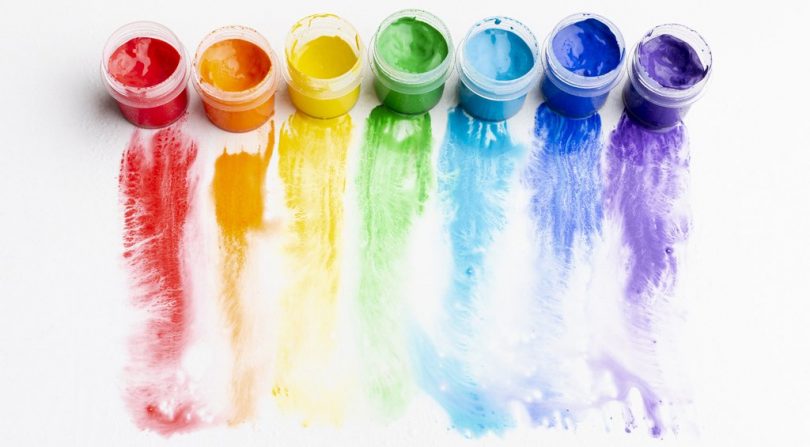Using color in marketing and advertising can be a very effective way to create a unique and memorable customer experience. Clipp Out Line explains how to create colorful works and use them effectively; businesses can create an environment that is visually appealing and representative of their brand. Color is one of the most critical aspects of marketing and advertising. There are many different ways to use color to create the desired effect.
However, getting customer feedback and testing different approaches is essential until you find something that works well for your business. Different colors affect people, so it is important to experiment until you find something that works best for your brand. Some colors represent a particular industry or activity, so choosing colors that reflect this can be helpful. Additionally, different colors could work better with different designs and messages.
How to use color to create a mood in your marketing
To create a mood in your marketing, you must start with the right colors. Color is one of the most significant design elements; it can easily change the tone and feel of an entire piece. Here are four tips for using color to create a mood in your marketing:
1. Use warm colors to energize your audience. They’ll feel cheerful and optimistic, encouraging them to take action.
2. Use cool colors to relax and soothe your audience. They’ll feel at ease and motivated to make a purchase.
3. Choose contrasting colors for extra impact. They’ll stand out against their surroundings and be more noticeable than if you used the same color throughout your design.
4. Avoid using too many colors together – they can become overwhelming and confusing for viewers.
One of the essential things a graphic designer or photographer can do is create a cohesive and organized visual scheme. Too many colors together, however, can quickly become overwhelming and confusing for viewers.
How to use color psychology in advertising
Color has a powerful effect on the human mind and can be used to influence consumer behavior. As a Graphic Designer or Photographer, it is essential to understand how color psychology works and use it to your advantage in advertising. Here are some tips:
1. Use contrasting colors to create interest. Reds and pinks are generally more active than whites and grays, making them a good choice for headlines and other attention-grabbing elements.
2. Use warm colors to evoke feelings of comfort and security. This is especially useful in products that are likely to be used in the home, like towels or linens.
3. Use cool colors to create a sense of detachment or optimism. This can be effective in products that aim to inspire awe or confidence, like cars or fashion clothing.
4. Use shades of one color to create depth or richness.
The science of how colors influence mood
Color is one of the world’s most potent and ubiquitous forms of communication. It has been shown to affect mood, behavior, and even physiology. This article will explore how color can be used as a tool for graphic designers and photographers.
One of the first studies demonstrating the effect of color on mood was conducted in 1968 by Dr. Rosalie Raye. She studied nurses’ reactions to hospital colors. She found that patients who were kept in rooms with light blue or green shades felt calmer than those in rooms with darker colors.
Since then, many studies have been conducted on the subject, and the results are consistent: using lighter colors to associate with feelings of happiness (blue) or relaxation (green) has a calming effect on people. On the other hand, dark colors have a stimulating effect and are associated with energy and activity.
How to get creative with your color choices in marketing and advertising!
Color is one of the essential elements in design and advertising. It can help create an emotional connection with your audience and help you stand out from the competition. When creating graphics or advertisements, it is important to use color creatively to make your message resonate with your target audience. Here are two tips for getting creative with your color choices:
1. Use Colors To Create A Sense Of Unity Or Contrast: One of the critical principles of design is to use different colors to create a sense of unity or contrast. This can draw attention to specific elements or areas of an image or communicate a specific message.
2. Use complementary Colors To Enhance The Effectiveness Of Your Message: Complementary colors are two colors that work well together because they contrast each other but also complement each other in some way.
Secrets to using more vibrant colors in your marketing schemes!
1. Trying to stand out with your colorful marketing schemes can be challenging. Still, it’s definitely possible with some creative thinking and help from a graphic designer or photographer! Here are five secrets to using more vibrant colors in your marketing: 2. Use complementary colors to create a more harmonious scheme. For example, orange and green work well together because they are opposite on the color wheel.
3. Use bright primary colors to draw attention to your branding or product. For example, red is often used to symbolize energy and enthusiasm. Use it in your branding schemes to stand out from the competition.
4. Use muted tones for a more subtle effect. For example, use blue instead of red for your brand’s logo, or try using gray as an accent color instead of black or brown.
How to create better graphics with color – even if you don’t have a designer!
Graphics can be created in various ways, but no matter your style, you can improve your work with color. Here are some tips for using color effectively even if you don’t have a designer:
1. Look at the colors around you. When choosing colors for your graphics, be aware of the colors already in the environment. You’ll be able to use more natural and less artificial colors this way.
2. Use complementary colors. When two colors are opposite each other on the color wheel (e.g., blue and orange), they are called complementary colors. Complementary colors create a strong contrast and can be very effective when used together in graphics or artwork.
3. Use shades of color.
In conclusion:
Using colors in marketing and advertising can be a powerful way to differentiate your brand and communicate your message. Experiment with different colors to see what works best for you and your audience. Be sure to keep your branding consistent across all of your marketing materials. Finally, don’t forget to use color to create a sense of warmth and familiarity in your advertisements and marketing materials.






